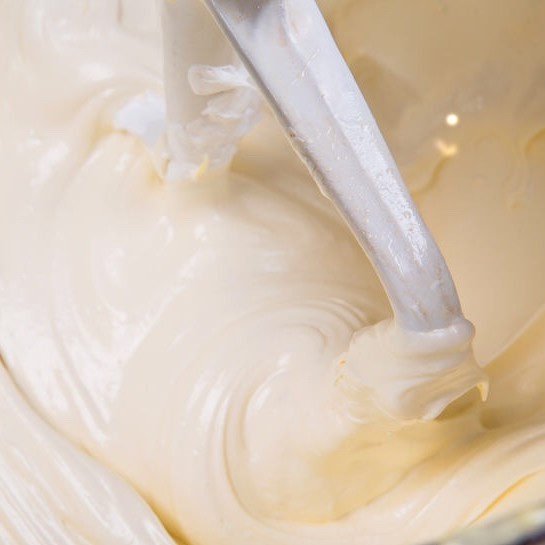Propylene Glycol Monoesters
Also Known as PGMEs
What are propylene glycol monoesters (PGMEs)?
Propylene glycol mono esters are produced by esterification or interesterification of propylene glycol. They can be used as emulsifier for the baking industry, for products such as cakes or non-dairy whipped products.
Origin
PGMEs are synthesized from propylene glycol with fatty acids or fat. Lipase has also been used to catalyze the esterification process to produce the clean label PGME.1
Function
PGMEs are good water-in-oil emulsifiers and have lower hydrophile-lipophile balance (HLB) values (approximately 3.5 HLB) than many glycerol monoesters because of fewer free hydroxyl groups. PGMEs are alpha-crystalline tending, surface-active compounds that have proved to be an especially effective emulsifier. They form a film around entrapped air bubbles to stabilize the food system or form mechanically strong crystalline films at water/oil interfaces that prevent a coalescence of dispersed droplets.1
Commercial Production
PGMEs can be produced either by direct esterification or interesterification.
Direct esterification is conducted by reacting fatty acids (usually C16/C18) with propylene glycol in the presence of an acid or alkaline catalyst. Product from direct esterification is the mixture of PG monoester and diester.
Heating propylene glycol, fat and an alkaline catalyst carries out interesterification. Product from interesterification includes PG monoester, diester, monoglyceride, diglyceride. Mono-, di- and triacylglycerols are also reaction products in the interesterification process
The monoester can be purified by molecular distillation, yielding a product of 90% purity. Differences in functionality exist between products derived from the two processes. Even though interesterification of fats is more economical, products from esterification of fatty acids are needed when color or specific functionality of the ingredient is critical.2
Application
PGMEs are often used in cakes and non-dairy whipped products, such as imitation creams, whipped toppings, and spray-dried topping products.1 They can give whipped cream good volume, foamy texture, and stability against synereses. PGMEs can be used in combination with mono- and diglycerides to obtain excellent cake batter behavior, resulting in increased cake volume and uniform structure.1
PGME is used in the cake mix between 4-12%, cakes 2-12%, icings and fillings 2-6%, on a shortening basis.3
FDA Regulation
PGMEs are permitted for direct addition to food for human consumption by FDA in the article 21CFR172.856.4
References
- Shaw, Jei-Fu, Hui-Zhen Wu, and Chwen-Jen Shieh. “Optimized Enzymatic Synthesis of Propylene Glycol Monolaurate by Direct Esterification.” Food Chemistry 81.1 (2003): 91-96.
- Hasenhuettl, Gerard L. “Chapter 2: Synthesis and Commercial Preparation of Food Emulsifiers.” Food Emulsifiers and Their Applications. 2nd ed. New York: Springer, 2008. 16-17.
- Nash, Nat H., Brickman, Lawrence M. “Food Emulsifiers-science and Arts.” Journal of the American Oil Chemistry Society 49 (1972): 457-61.
- “CFR – Code of Federal Regulations Title 21CFR172.856.” Accessdata.fda.gov. N.p., 01 Apr. 2016. www.accessdata.fda.gov/scripts/cdrh/cfdocs/cfCFR/CFRSearch.cfm?fr=172.856. 13 Apr. 2017.


